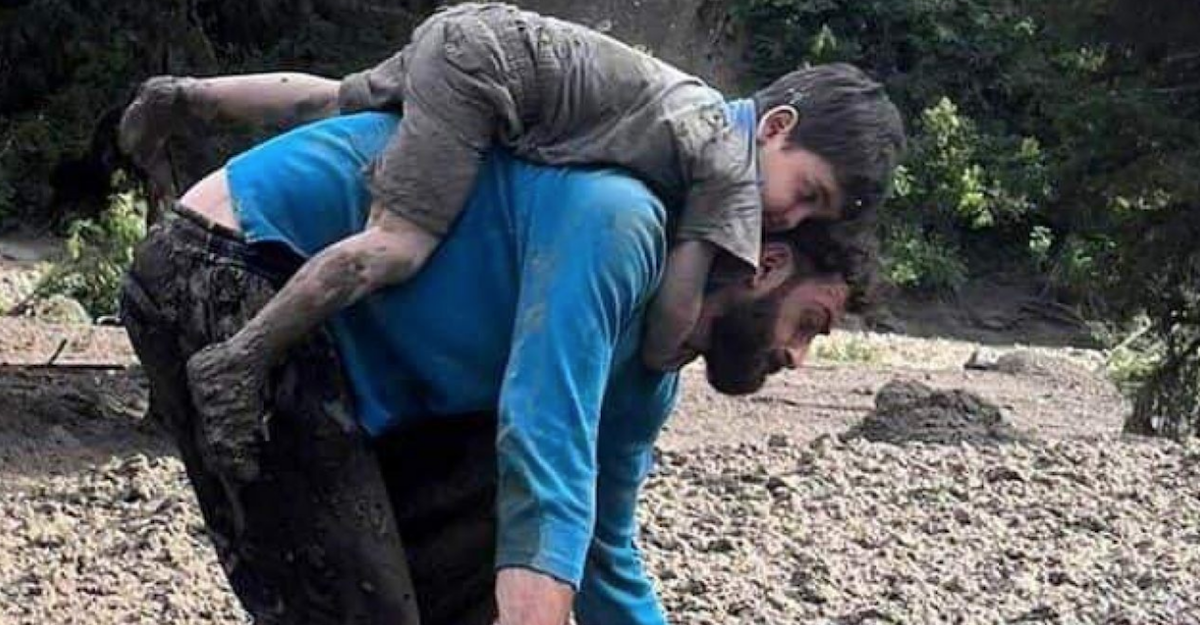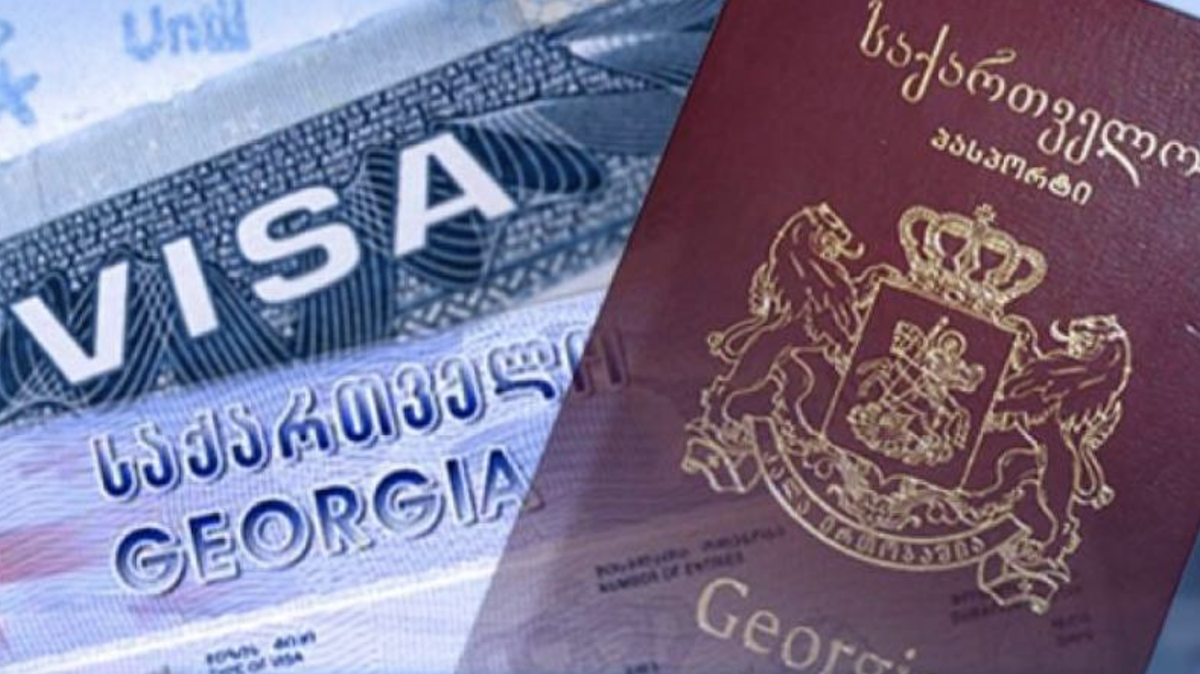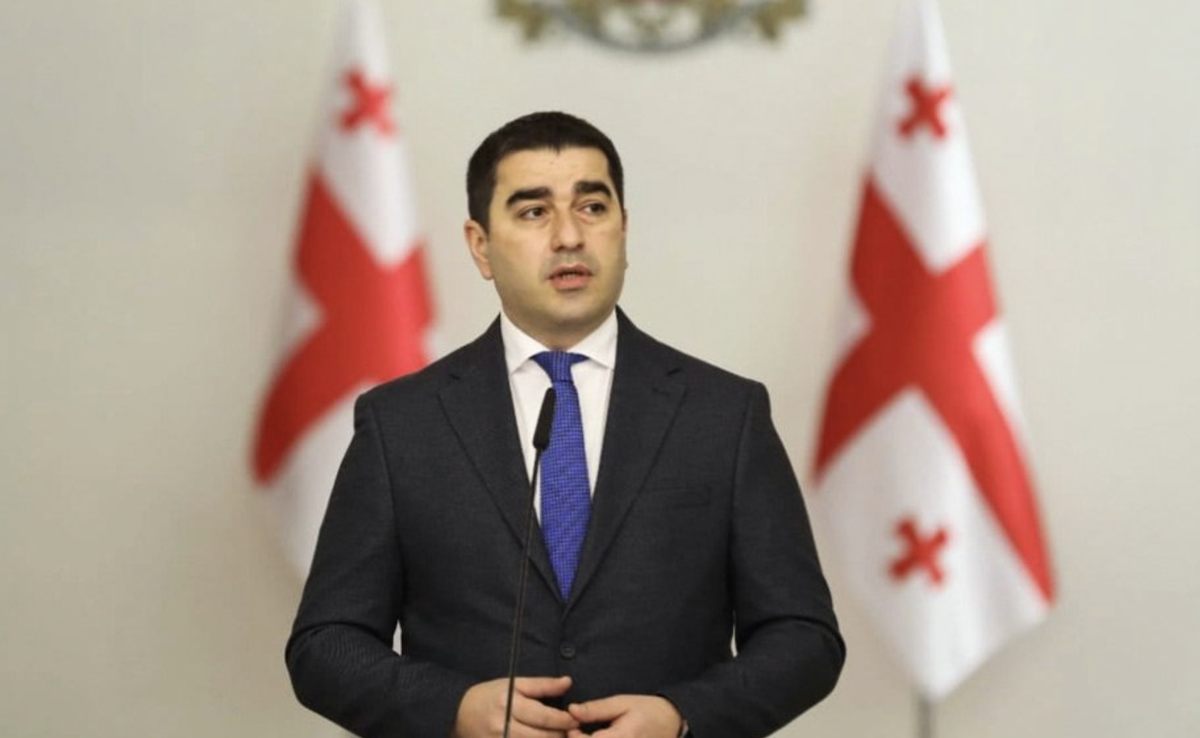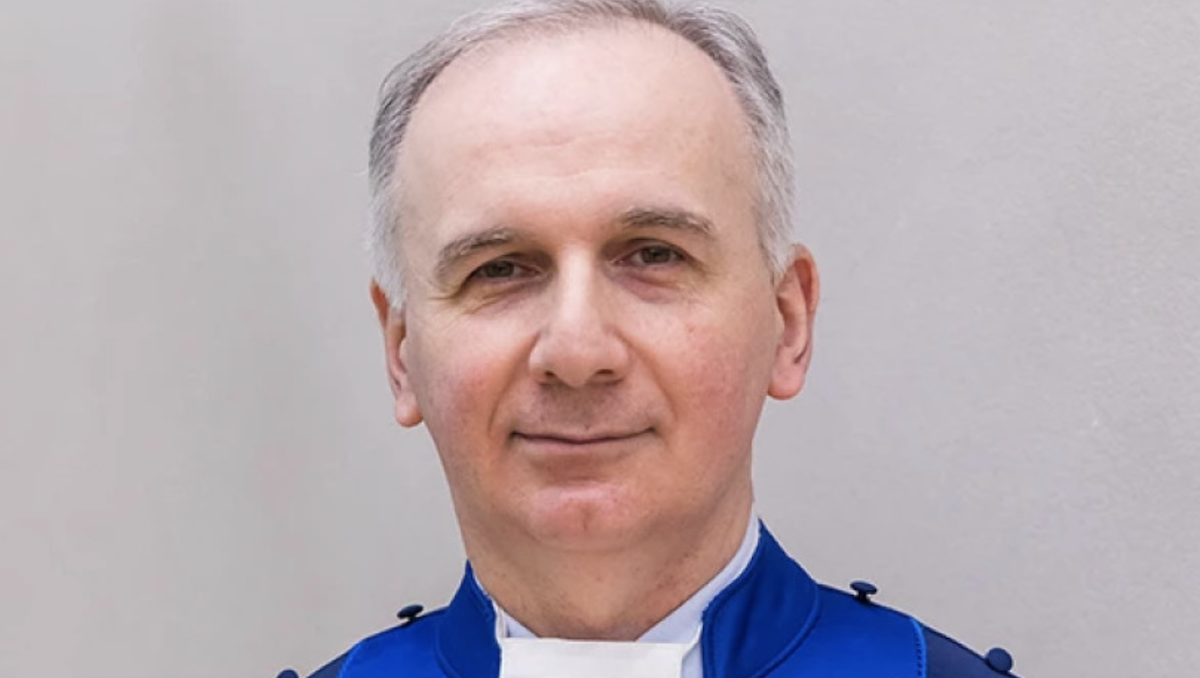"We cannot forget": One year since the tragedy at the Shovi resort in Georgia, where a landslide claimed 33 lives
Georgian Shovi after landslide
On August 3, it marked a year since the catastrophic landslide hit the mountain resort of Shovi in Georgia. The disaster claimed 33 lives, and the search for many bodies continued for weeks. One teenager’s remains are still missing. The resort of Shovi is now abandoned.
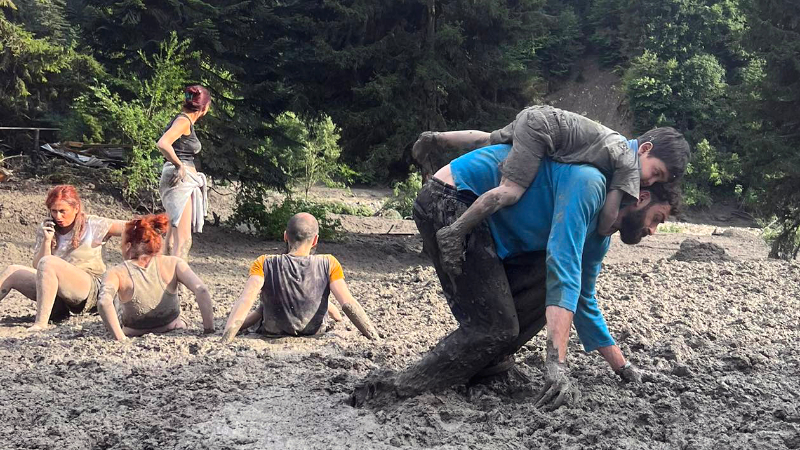
-
Victims of the landslide in Shovi
The landslide in Shovi claimed 33 lives, including entire families:
- Nine members of the Gutashvili family.
Zaza Meskhi, his wife Alina Polikovskaya, and their three children, one of whom is the missing teenager. The family, who lived in the Netherlands, had come to Georgia for a vacation.
Siblings Giorgi and Sofo Karalashvili, who were spending their holidays in Shovi before heading abroad for their studies.
Marina Khorbaladze, her daughter Manana Jachavadze, and her grandson Giorgi Khorbaladze.
- Nine members of the Gutashvili family.
What happened in Shovi?
Was it possible to save any of the victims? How are the survivors of the catastrophe living now? Has anyone taken care of them? How is the investigation progressing? What has the government learned from this bitter experience? A year after the tragedy, answers to these and many other questions remain unanswered.
JAMnews has attempted to find out what is known about one of the largest tragedies to occur in Georgia in recent years.
What Is happening in Shovi today?
The traces of the destructive natural disaster are visible everywhere in Shovi. The place that a year ago was filled with tourists is now covered with huge uprooted trees, rocks, and fragments of mountain debris carried by the flow.
On August 3, 2023, at three o’clock in the afternoon, a landslide occurred at the Shovi resort. Within a few minutes, the resort was buried under meters of landslide debris. The overflowing river destroyed bridges, carried away cars and trees.
People caught by the disaster called emergency services. Rescuers soon arrived at the scene, but the scale of the catastrophe made it difficult for them to work. A rescue helicopter arrived at the site by the evening, three hours after the incident. That night, the helicopter evacuated 210 people from the disaster zone.
In the thick, dried layer of mud, remnants of clothing, shoes, children’s toys, crushed bicycles and cars, and building ruins can still be seen.
The remnants of the foyer of the once very popular hotel are completely covered in dried mud.
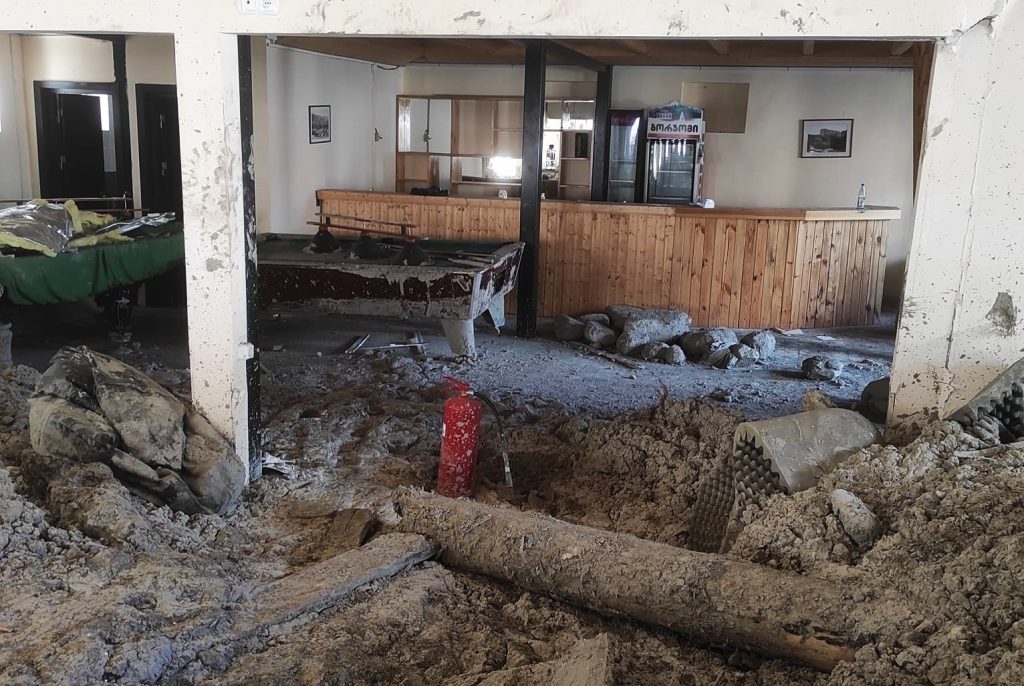
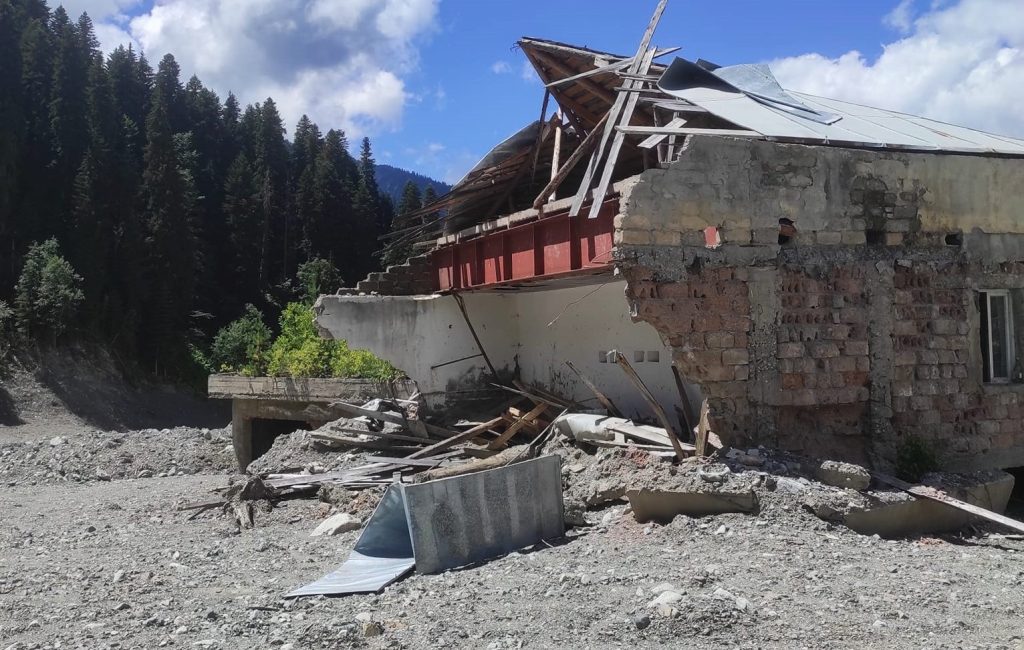
In the courtyard in front of the hotel, red roses are blooming— the only sign of life at this deserted resort.
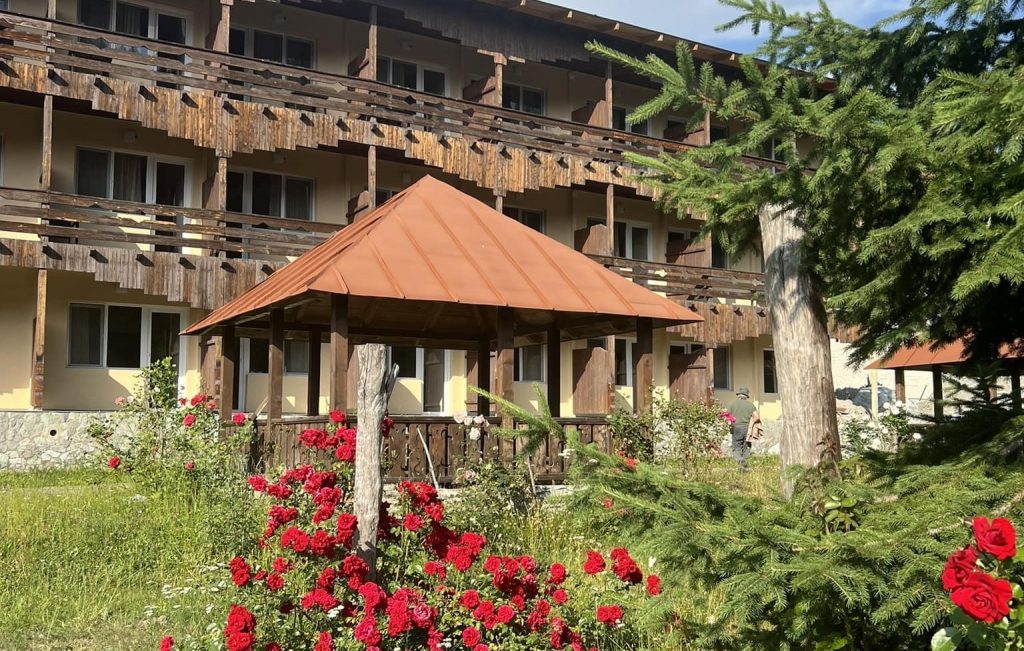
A year later, only the riverbed has been cleared. No one knows if Shovi will ever be restored, or if it will be possible to live and vacation here again. For now, there isn’t a single living soul around, and even neighboring villages have seen a significant drop in visitors.
Tbilisi resident Giorgi Sadzaglishvili is vacationing with his son in the village of Glola, two kilometers from Shovi. He says he loves this region—called Racha—and decided to come here this summer. In his view, it’s safe:
“Glola wasn’t affected, even when the tragedy happened. Also, as far as I know, the riverbed has been widened and can handle a large flow. I don’t see any threat in Glola.”
Due to its proximity to the Shovi resort, Glola used to be bustling with tourists in summer and autumn. For locals, it was a major source of income.
But this year, there are almost no tourists.
Giorgi says that now, apart from him, there are only a few tourists in Glola.
- Tragedy in Shovi: What happened and could the loss of lives have been prevented?
- Chairman of ruling party of Georgia questions stories of Shovi landslide survivor
Survivors
The rescue helicopter, which arrived at the disaster site a few hours later, evacuated over 200 people from Shovi. Some managed to escape the mud trap, which was several meters deep, on their own.
The survivors still find it extremely difficult to recall those events. In conversations with JAMnews, they said that not a single night goes by without them remembering what happened in Shovi. Even children remember that horrific day.
However, none of these people have been officially recognized as victims. The authorities stated that they do not have injuries that would qualify them for such status.
In August 2023, Giorgi Adamia and his six-year-old son Tamaz were vacationing in the village of Glola and went for a walk in the surroundings. They were about to return when the landslide occurred:
“Neither my child nor I can forget it. Sometimes during the day, and sometimes at night or before sleep, I often remember what we went through and how we survived. It was something incredible. Utter horror. Mud flows were coming from all sides. We barely managed to get out.”
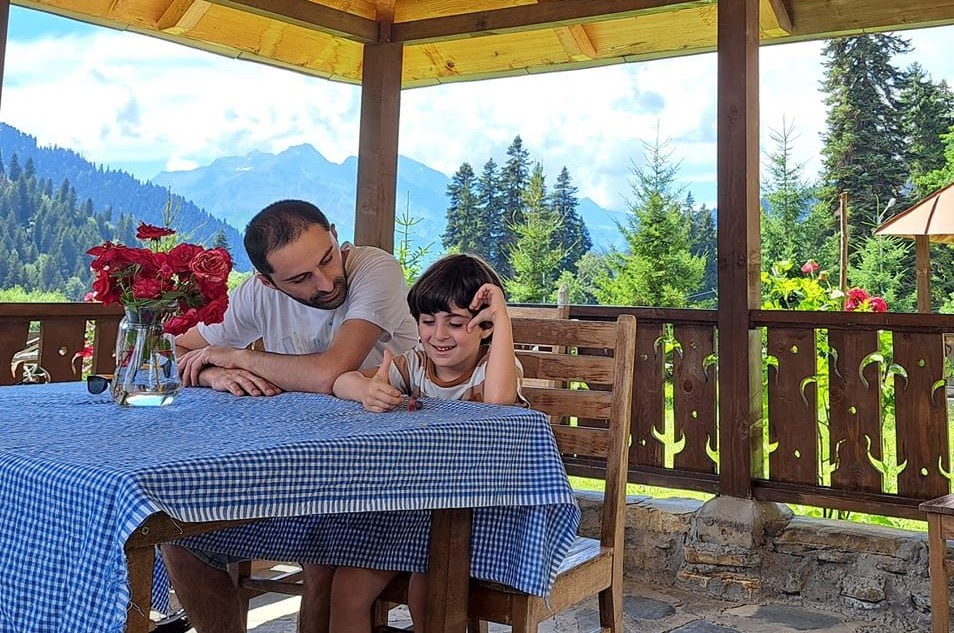
Giorgi recalls how six men reached them and helped them get to the hotel area, where it was relatively safe:
“It was incredible; they appeared out of nowhere. At first, I thought they were also victims. But they explained that they had come to help us. They gathered boards from the destroyed cottages and created a path for us to escape, leading us to the hotel, from where the helicopter later evacuated us,” Gio says.
Giorgi and Tamaz had deep cuts on their legs that took a long time to heal.
The state provided medical and psychological assistance to the survivors and the families of the deceased. The Ministry of Health told JAMnews that 22 people affected by the landslide in Shovi received medical (outpatient) and psychological assistance:
“Everyone who reached out to us,” said the ministry.
However, Giorgi says that the psychological help did not work for them. Firstly, it was offered very late and only after he publicly wrote about it. Secondly, the help was unsatisfactory.
Since the incident, Gio and his son have not returned to Racha. He has become fearful of the mountains.
“We went through very tough times. It’s really difficult; life continues as usual, and we are trying to cope,” says Lana Jeladze. Lana is originally from Racha, and that day, her entire family was on a picnic in Shovi.
They had four children with them. According to Lana, the older ones—12-year-old Anastasia and 7-year-old Masho—understand what happened:
“At first, in the early days, they didn’t want to remember August 3 at all. But now, not a day goes by without the children recalling that terrible day. They remember specific moments—how the waves of mud engulfed us, how we crawled through it.”
The Jelodze family took advantage of the psychologist provided by the state. However, this was only two weeks later, as Lana says.
“Both adults and children, everyone went,” Lana says.
“The first days were unbearably difficult. On the one hand, there was fear; on the other, the wounds we had on our legs and arms.”
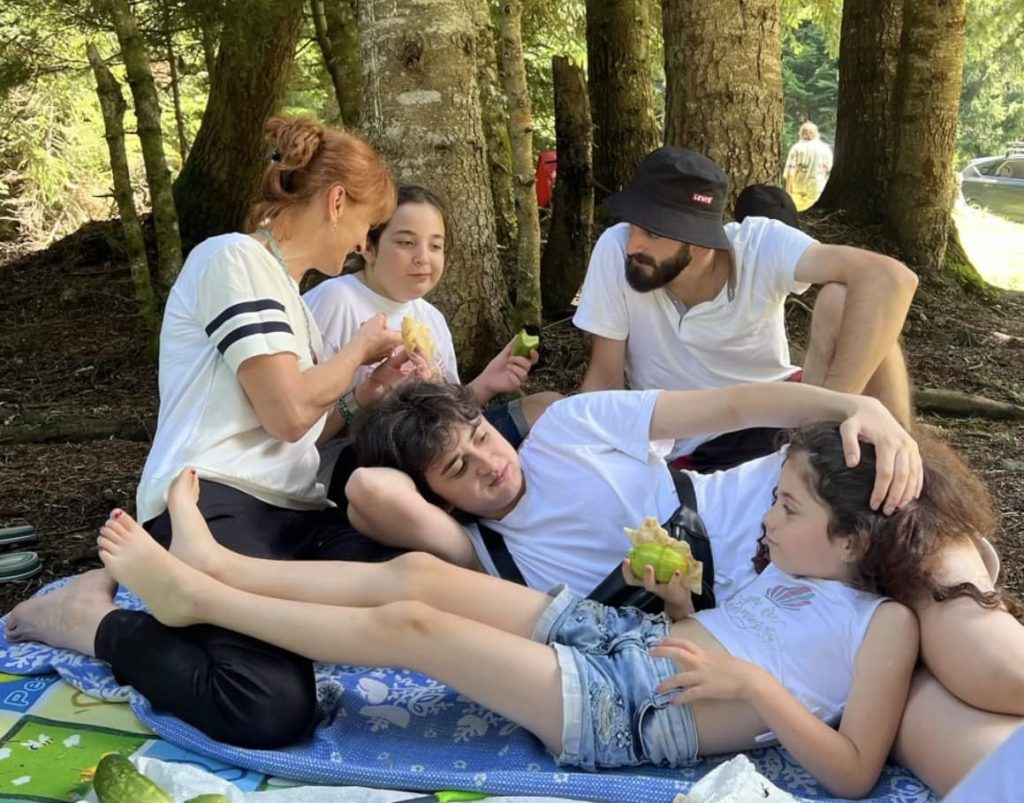
Lana still lives in Racha with her parents and works as a teacher at a local school. A week ago, she dared to go up to Shovi for the first time in a year:
“The hardest part was seeing the destruction and feeling the silence around. It was as if I could once again hear those doomed voices calling for help… It was very difficult.”
Could anyone have been saved?
Could the people in Shovi have been saved? Survivors can’t stop asking themselves this question.
The more time passes, the more questions torment Gio Adamia—if rescuers had started the search immediately, could someone have been saved? What if someone had survived in that mud for a long time that night?
Gio thinks that those who were buried under the mud had fewer chances of survival because the mudslide was too powerful. He also remembers that many were simply swept away by the mudflow into the river, making it impossible to escape such a whirlpool.
But if there had been an alarm—just one minute before the disaster, more people could have been saved. [7.5–10 minutes is the time it took for the mudflow to descend from the mountains to Shovi, according to geologists.]
“I, Jeladze, and others would have had time to escape. In five minutes, Shovi would have been empty, and in my opinion, there would have been no victims. I think there were only about a hundred of us in Shovi, and 33 died.”
These questions also trouble Lana—she knows for sure that the help arrived too late:
“We were trapped in the landslide for five hours, and I don’t know what else I can tell you, but a timely response could have made a difference.”
The government dismisses this criticism.
“Those who could survive, survived,” the authorities say.
According to them, the rescue operations were not delayed, the helicopter arrived on time, and there was no need for volunteers or international assistance in the search efforts.
At least, that’s what the Minister of Internal Affairs claims, who, by the way, wasn’t even in the country at the time and only visited Shovi on the 11th day after the disaster.
What the final geological report says
The Ministry of Environmental Protection of Georgia published the final report on the Shovi disaster in February 2024.
This 69-page report gives the impression that the ministry is trying to avoid responsibility.
Based on field studies conducted in the valley, it was established that a rockfall occurred west of the Buba Glacier. This moving rock mass collided with the glacier, causing a partial collapse, which may have led to the release of subglacial waters. The resulting flow then moved rapidly down the valley.
According to the report, it took this deadly mass 7.5 to 10 minutes to reach the resort, moving at a speed of 18 to 24 meters per second.
The report concludes that with such a combination of natural phenomena, “it is practically impossible to predict the exact timing of such tragedies worldwide.”
Moreover, given the scale of the event, an early warning system could not have been effective “considering the rapid movement of the landslide and the short distance from its origin to the nearest populated area.”
“In general, in such types of valleys, it is technically almost impossible to implement substantial protective measures against processes of such scale. Currently, the best and most effective way to protect people and infrastructure is spatial planning,” says the final report of the National Environmental Agency.
What is known about the ongoing investigation?
We are currently unaware of the status of the investigation. A year has passed since the tragedy, yet the Ministry of Internal Affairs (MIA), despite significant public interest, has not held a single briefing. The only time the interior minister publicly addressed questions about Shovi was on September 22, when he was summoned to parliament.
What we do know so far is that the case now spans more than 70 volumes.
The Georgian MIA is investigating the incident in Shovi under two articles of the Criminal Code: negligent manslaughter and violation of safety rules during mining, construction, or other work.
However, lawyers believe that two additional articles should be included: leaving someone in danger and official negligence.
This is also the demand of Ia Merebashvili, the mother of one of the victims, Davit Beriashvili. Ia believes that the state abandoned her son to his fate. Her interests are being represented by lawyer Ana Tavkhelidze from the “Partnership for Human Rights” organization.
On February 29, 2024, a prosecutor and investigator issued a decree prohibiting Ana from publicly discussing the contents of the case. Therefore, she can only tell us what was disclosed before February 29.
Ana points out inconsistencies in the investigation.
First and foremost, Ana believes the problem lies in the classification of the investigation—the case has not included charges related to official misconduct and leaving someone in danger. Access to materials is also an issue: “We have to spend hours there, analyzing the materials, often in a rather hostile environment. And that is very difficult.”
Additionally, Ana finds it wrong that the survivors have not been recognized as victims:
“The state does not acknowledge the physical and emotional harm caused to these people, including the children.”
There are many other issues that concern the lawyer:
- Delayed photography of bodies: The bodies were photographed with a delay, and not all of them underwent medical examination. This could have provided answers to the families about where their loved ones were found and whether they could have been saved.
- Lack of proper equipment for rescuers: The rescuers did not have the appropriate equipment, which hindered their quick response and put their own lives at risk.
- Drones: The issue of drones remains unresolved. The Ministry of Internal Affairs (MIA) claims that five drones were operating at the site, but so far, the case materials do not include continuous footage from them. Additionally, there is no recording from the tourist’s drone, which started filming the events from the first moments. The investigation has not found this tourist at all.
- Delayed helicopter response: It remains unclear why the rescue helicopter was sent to the site 50 minutes late and whether it was suitable for nighttime operations.
Ana also says that at the time of the disaster, the authorities in Oni (Shovi is located in the Oni Municipality) did not have a civil safety passport or an evacuation plan. Notifications from the National Environmental Agency were also not received. These notifications were sent using an outdated information database and were received by former municipal employees.
“In general, there are even more violations, but I cannot discuss all of them due to the non-disclosure agreement. All of these indicate an ineffective investigation and improper fulfillment of duties by various institutions. This needs to be investigated,” says Ana.
She also mentioned that due to these and other issues, along with the demand to transfer the case to the prosecutor’s office, lawyers have already filed more than 35 complaints.
Ana believes that the investigation should not be conducted by the MIA. It turns out that this ministry is investigating its own crime, which creates a conflict of interest.
Nestan Londaridze, a lawyer from the “Human Rights Center,” who represents another victim, echoes the same sentiment.
Nestan defends the interests of David Maisuradze, who lost his wife and two children (these are the brother and sister Maisuradze and their mother Shorena Bichashvili).
Additionally, Nestan points out that recently, the recording and numbering of investigation materials have ceased. This chaos further complicates the work of the lawyers.
JAMnews attempted to obtain details from the MIA, but they responded that they could not provide an official comment. However, the ministry confirmed that the investigation has not been reclassified and is still being conducted under the same articles as before.
What has the state learned from this tragedy?
We don’t have a clear answer to this question either.
About six months after the Shovi disaster, another similar tragedy occurred in Georgia—a landslide in Baghdati destroyed four homes.
Since August 2023, the Public Safety Management Center “112” has started sending text messages to the population.
These messages are sent very frequently, but they are too vague.
The messages typically say: “We inform you that on such and such a day, a sharp deterioration in the weather is expected. Please be cautious.”
No specifics are provided.
Recently, reports have surfaced again on social media about construction activities in avalanche-prone river basins.
In early July, seismologist Tea Godoladze conducted a live broadcast from Racha on social media, where she mentioned that a kindergarten was being built in the floodplain of the Garula River in the village of Gari.
However, the government eventually fulfilled its promise made back in 2022 by purchasing new rescue helicopters.
According to information published on the Border Police website, the first helicopter was delivered to Georgia in March 2024, and the second one arrived in May.
The Border Police press service informed JAMnews that a third helicopter will be brought to Georgia this summer.










